150 open-spec, community-backed Linux SBCs under $200
Jan 7, 2021 — by Eric Brown — 10347 views Welcome
to our catalog of 150 open-spec, maker-oriented single board computers
that run Linux or Android. In this introduction we examine the
highlights and trends of 33 new boards from 2020 and debut our
price/performance and feature matrix charts.
Welcome
to our catalog of 150 open-spec, maker-oriented single board computers
that run Linux or Android. In this introduction we examine the
highlights and trends of 33 new boards from 2020 and debut our
price/performance and feature matrix charts.
The Catalog link in the box below leads to updated summaries of 150
community-backed and predominantly open-spec Linux/Android hacker boards
under $200. You can also explore the spreadsheet links below, which
show comparative features for each SBC. The “new” icon refers to new
products included since our Jan. 2020 roundup of 136 boards.
The Linux hacker board market started off so slowly in early 2020 that we skipped our usual mid-year update. With the pandemic all but shutting down the East Asian manufacturing centers in the early months, new product introductions slowed to a crawl.
Yet the business rebounded quickly, helped in part by demand for embedded devices to combat Covid-19 in everything from medical devices such as ventilators to thermal imaging kits. Technology related to videoconferencing boomed, and the hobbyist end of the maker board market was perhaps encouraged by growing demand for indoor projects to maintain sanity and boost technical skills during quarantine and/or unemployment.
By the end of the year, we counted 33 new boards compared to 18 new entries tallied for 2019 in both the Jan. 2020 and June 2019 catalogs. There were also some discontinued boards that we removed (see farther below). As seen in our price/performance comparison chart, 21 of our 33 new boards are priced under $80, and seven are under $20. Yet for the second year in a row, prices on existing boards have risen more than they have dropped, perhaps due in part to tariffs or pandemic-related issues.

Price/Performance Chart
(click image to enlarge)
| Lowest price compared with a rough estimate of performance (includes CPU and GPU speed and performance affecting coprocessors such as AI chips plus available RAM on the base model — does not include other features.) |
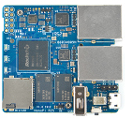 NanoPi R2S |
As indicated in the Feature Matrix chart below, three mostly separate trends marked the 2020 crop of hacker boards: networking, AI, and x86. There is considerable demand for tiny, predominantly headless dual-LAN — and increasingly dual Gigabit Ethernet — networking and IoT boards. New dual-LAN entries include the NanoPi R2S, NanoPi R4S, Rock Pi E, and Orange Pi R1S, and the new Banana Pi BPI-R64 boasts 4x GbE ports. The Odroid-H2+, meanwhile, breaks new ground as the first dual 2.5GbE board in the roundup. The networking measure on the chart below also takes into account wireless technologies and M.2 or mini-PCIe expansion for wireless, which is still a rarity on under $200 boards.

Feature Matrix
(click image to enlarge)
The AI trend is more pronounced than this roundup might indicate, as some NPU-equipped boards, such as some that use the Rockchip RK3399Pro, are over our $200 limit. Qualifying entries include the Coral Dev Board Mini and Tinker Edge T spinoffs of Google’s Coral Dev Board, both tapping the same Edge TPU chip. Adlink’s Vizi-AI, meanwhile, combines Intel’s Apollo Lake SoC with the Myriad X VPU, and the Wandboard IMX8M-Plus and HummingBoard Mate exploit the built-in NPU on NXP’s i.MX8M Plus.
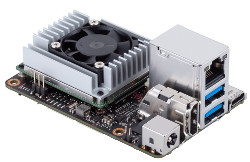
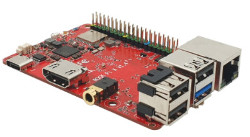
Tinker Edge T (left) and Rock Pi X
(click images to enlarge)
We saw several new x86-architecture boards in addition to the Vizi-AI, and for the most part they are more affordable and open source than in previous years. Now that the Atomic Pi project has wrapped up, Radxa’s Cherry Trail based Rock Pi X is the new x86 price leader at $49 with 1GB of RAM and 8GB eMMC.
Hardkernel released an updated Odroid-H2+ version of its Intel Gemini
Lake board, starting at $176, and DFRobot’s Cherry Trail based
LattePanda Delta is back with a $188 Ubuntu model with improved
documentation and support. Seeed launched a dual-core Gemini Lake based
Odyssey-X86J4105800 starting at the same $188 price. The Ryzen Embedded
V1000 based Udoo Bolt is the only AMD-based hacker board we have seen,
and it remains above our $200 limit.
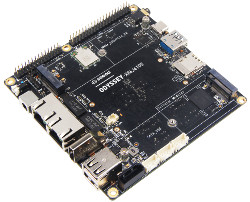
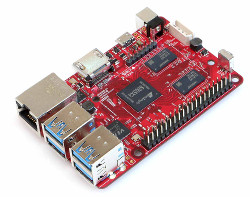
Odyssey-X86J4105800 (left) and Odroid-C4
(click images to enlarge)
Despite the bump in Intel-based boards, the community maker board market continues to be dominated by Arm. There were no new Raspberry Pi SBCs in 2020, but we saw an 8GB RAM Raspberry Pi 4, a Raspberry Pi CM4 module with the same chip and RAM options, and a Raspberry Pi 400 keyboard computer spinoff. The Raspberry Pi 4 remains highly competitive, especially at $35 with 2GB RAM, and there is increasing adoption of the Raspberry Pi form factor and 40-pin GPIO.
Despite the growing Pi hegemony, other vendors continue to promote their latest Pi killers. Hardkernel’s $50 Odroid-C4 is one of the more compelling new RPi 4 rivals, featuring a quad-core, Cortex-A55 based Amlogic S905X3 SoC that Hardkernel claims is faster than the RPI 4’s quad -A72 Broadcom BCM2711. The new $63-and-up Odroid-N2+ with its updated version of the hexa-core -A73 and -A53 Amlogic S922X is even faster. It is likely the most powerful Arm board in our catalog, edging out the Khadas Vim3.
Rockchip’s hexa-core RK3399, which has dominated the high-end hacker board scene for years, also tends to outperform the RPi 4’s BCM2711. Yet, there were only two new RK3399 based entries in 2020: Radxa’s dual-display Rock Pi 4 Model C and the headless NanoPi R4S, which wastes the SoC’s media features while exploiting its native PCIe connection for faster GbE.
There were more new entries with Rockchip’s mid-range RK3328, including the Rock Pi E, Orange Pi R1 Plus, NanoPi Neo3, and NanoPi R2S. On the low-end, ST’s Cortex-M4-equipped, dual -A7 STM32MP157C has been tapped for Seeed’s Odyssey–STM32MP157C, Shiratech’s Stinger96, and ST’s own DK1 and DK2 dev kits.
 Orange Pi Zero2 |
The Allwinner’s H6 has not turned out to be a major player in the SBC maker market, but the Orange Pi Zero2 debuts a similar, quad -A53 H616 variant. Other new boards tap lower-end models including the Allwinner H3 (Quantum Mini) and the camera-oriented Allwinner V536 (Lindenis V536) and Allwinner S3 (PineCube).
Approximately 90 percent of the boards in our roundup offer open Linux or Android images, community resources such as forums, tutorial, and support, and posted schematics and/or other open hardware resources such as 3D CAD files. Unless otherwise noted, the products can be designated as open-spec community SBCs. In some cases, which we detail below, we have allowed projects with strong community features but no open hardware files or limited files. We also accept some boards with full schematics and documentation but limited support features. For more details on technical, shipping, and open source requirements please see our Selection Criteria sidebar.
This year, we had 18 retirements from the catalog. For the most part, these were clear discontinuations, but in some cases, we were forced to guess whether “out of stock” meant end of life or was a measure of the SBC’s success. Board vendors are often annoyingly vague on the subject. There were also a few SBCs that we removed due to aging technology combined with lack of activity on the community site (LinkSprite Arches and Acadia) or the closure of the site (CubieBoard4 and 5).
2021: BPI-M5, Tinker Board 2, new UP Xtremes, and maybe an RPi 5?
In 2021, we can look forward to SinoVoip’s Banana Pi BPI-M5, based on the quad-core -A55 Amlogic S905X3, as well as Asus’ RK3399-based Tinker Board 2. Perhaps later in the year we will see the Olimex Tukhla SBC built around NXP’s i.MX8 QuadMax.
 UP Xtreme Lite |
Aaeon will soon launch a reduced feature UP Xtreme Lite version of the Whiskey Lake UP Xtreme that may be priced low enough to fit under our $200 limit. In the current quarter, we will see the 11th Gen Tiger Lake based UP Xtreme i11 go on preorder, but it is not likely to be under $200. Later in the year, we can expect to see the Elkhart Lake Atom based UP Squared Pro 2.
Our money is on a Raspberry Pi 5 release in 2021, but RPi Trading is staying mum. There is also the potential for an open-spec RISC-V board that fits under our price limit, perhaps a Raspberry Pi sized reduction of the $665 HiFive Unmatched.
Finally, Rockchip, Amlogic, and others are producing interesting new SoCs, many with NPUs. By the end of the year, we can expect new boards based on the octa-core -A76 and -A55 Rockchip RK3588. The 8nm chip has a Mali Odin MP4 GPU, a 6-TOPS NPU, 8Kp60 decoding, quad display support, and up to 32GB LPDDR5.
Maybe it is time to raise our $200 limit.





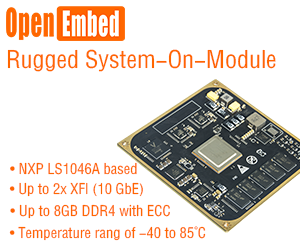



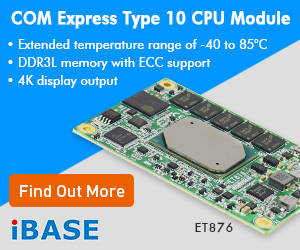

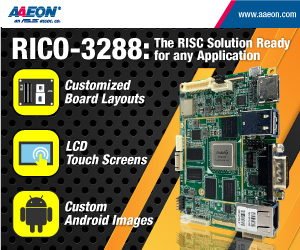


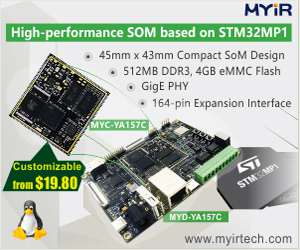




Nice liste but Upboard and udoo are missing from the list
Udoo (three versions) and Up Board are indeed on the list
I hope the pi form factor gets replaced with the pi4 compute module form factor.
I’d really like to see an explosion in carrier board offerings with different options, ideally with modular connectivity so I can choose which connectors are present.